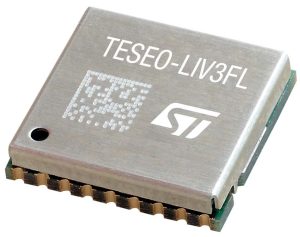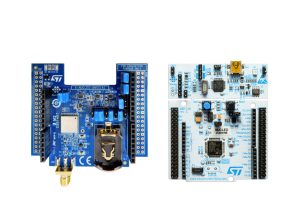With AlbaSpot IoT, ST’s Teseo-LIV3FL, and an STM32C071, engineers no longer use global navigation satellite systems (GNSS) to only track thousands of assets but millions. The reason is simple: thanks to massive gains in efficiency and performance, integrators can create a system vastly more scalable than what is traditionally possible. Consequently, Albora, the company behind AlbaSpot IoT and a member of the ST Partner Program, worked with ST to lower the barrier to entry by making the solution more accessible in our ecosystem and optimizing it for our GNSS module. There’s even a demo application that can run on ST evaluation boards to help teams get started.
The scalability conundrum
Tracking millions of assets at once is incredibly rare because of how unwieldy it is, which is why even large corporations, like airlines or smart cities, to name only two, mainly limit themselves to tens of thousands of trackers at best. Indeed, one of the significant issues is power consumption. Trackers are by nature small and battery-powered. While they spend most of their time asleep, it takes them about 30 seconds to find a satellite, download all the information needed to compute their location, and send that data to a cloud using a sub-GHz or a cellular connection after waking up. As a result, companies must plan to replace batteries often, which makes it hard to scale.
The reason engineers adopt this approach is because it yields the best accuracy, which is also why they choose a global navigation satellite in the first place. The problem is that satellites send a lot of information to ensure accuracy. There’s the ephemeris, which is a table with orbital parameters, the clock correction to account for biases, the satellite’s health, the almanac, which includes data from all the satellites in a constellation, ionospheric and tropospheric corrections to deal with errors that may occur as the satellite sends its signal, and more. Consequently, receiving and processing all this information on the asset tracker poses real issues, as it drives power consumption up.
The AlbaSpot solution: Rethinking what information is necessary

AlbaSpot IoT stands out by offloading most data processing to the cloud, thus avoiding the inefficiencies of traditional systems. Instead of directly acquiring extensive satellite data, Albora retrieves minimal information while sourcing the ephemerides and almanac data online. The Teseo-LIV3FL gathers essential observables, such as satellite distances and partial location data, which the STM32C071 then compresses them, using Albora’s proprietary technology, and transmits them to the cloud. Combining the TESEO-LIV3FL and STM32C071 with AlbaSpot IoT reduces satellite acquisition time from 30 seconds to just three seconds, cutting GNSS module energy consumption by 90% and overall system power usage by 75%.
Using fewer data points slightly reduces accuracy, but the impact is minimal. While traditional GNSS systems offer ±2 meters precision, AlbaSpot IoT provides ±5 meters, which is an imperceptible difference in most scenarios. For users requiring ±2 meter accuracy, the system can be configured to collect more data, keeping the system awake for seven seconds instead of 30, therefore still ensuring significant power savings. This allows GNSS trackers to last 10 to 15 years in the field, which opens the door to large-scale deployments.
The partnership between Albora and ST also means that, besides the obvious power savings, engineers get a much smaller and more cost-effective solution. Instead of a large and costly GNSS module that must support myriads of channels, it is possible to use a Teseo-LIV3FL, which means a smaller design footprint, a more straightforward PCB layout, and a more advantageous bill of materials. Albora also shared how its teams worked closely with ST to optimize its solution’s performance on our GNSS module and create an application for our evaluation boards and our cost-effective STM32 general-purpose microcontroller.
Next steps

Hence, the best way to get started is to grab the EVB-LIV3FL and contact Albora to demo their application. It is also possible to use the X-NUCLEO-GNSS1A1 and a NUCLEO-C071RB to mimic the specifications of the embedded system and try the STM32C071. Albora created two versions of its demo, one basic and the other advanced, thus enabling developers to choose between a program that runs very quickly or one that helps them try out more features.




